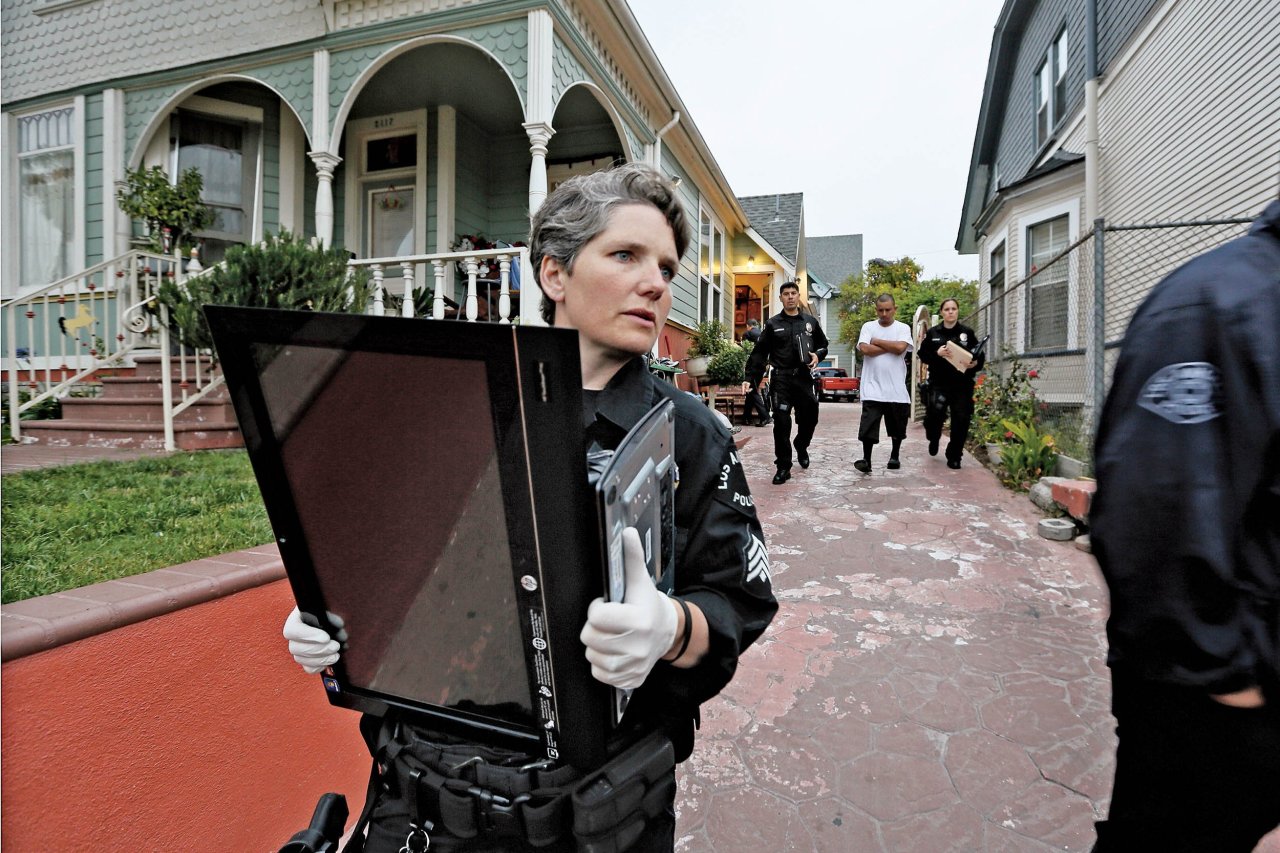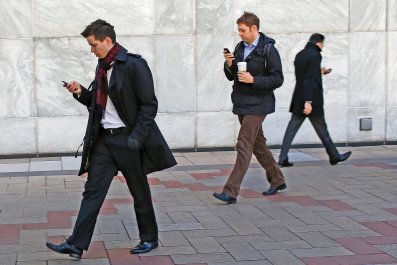When Bryan Woldman arrived at an AMC movie theater in suburban Illinois earlier this year, he thought he was meeting a 12-year-old girl for a sexual rendezvous. Instead, the 36-year-old personal trainer was arrested by the Naperville Police Department High Technology Crimes Unit.
The investigative unit tracked Woldman's communication with the underage girl using RADAR software, a technology developed for law enforcement by Robert Lotter, the CEO of the mobile security company eAgency. To date, the software has helped convict more than 2,000 sexual predators.
It helped convict Woldman, who pled guilty and was sentenced to two years of probation and ordered to register as convicted sex offender for the next ten years. It also helped snag Eric Hakala, a 37-year-old who created a Facebook account for "Mike Evans," a fake 15-year-old high school student he concocted as a way to communicate with and solicit sex from teenage girls. One girl reported Hakala to the police after he confessed he was "much older" and asked if that would "scare her off," so law enforcement set up a sting operation using RADAR technology on the teen's phone. Police then arrested Hakala and charged him with indecent solicitation of a child, distribution of harmful material and child pornography. His case is still pending.
Lotter created the software in 2008 while volunteering for the Orange County Sheriff's Department in Southern California. A friend of his, a detective in the Internet Crimes Against Children Task Force, was working a case involving an 11-year-old girl. She was approached by a 29-year-old man at a waterpark, who convinced her to exchange phone numbers and, eventually, photos. "When I realized how easy it was to exploit children, I made it my personal mission in life to stop this kind of evil from happening," Lotter explains.
"There were no solutions at the time for law enforcement to monitor or protect, let alone make convictions," he says. "There were no protocols or proven methods of evidence-gathering when cellphones were involved in exploiting children. I knew I had a mobile application platform that could be modified and I took the idea to my tech team. The result was RADAR."
RADAR is a mobile monitoring technology at its core that tracks and logs text messages, social media conversations and phone calls on mobile devices. It includes built-in tools to help officers manage their cases, overseeing multiple suspects and investigations simultaneously. At the end of a sting, RADAR is used to establish the chain of custody of all evidence, from the first unlawful act through conviction. This is essential, because without this chronological documentation, it's relatively easy for the accused's defense team to make allegations of tampering or misconduct; compromising an otherwise cut-and-dry case.
The software is provided free to law enforcement agencies, and in just a few years it has already been used in thousands of cases—data gathered from the software are fully admissible to court. It boasts a 100 percent conviction rate. In Jefferson County in Colorado, investigator Mike Harris's District Attorney's Office Technology Predator Unit has handled close to 750 cases while using the app, with all but five cases ending with the defendants entering a guilty plea. And, "in the five cases that did go to trial, juries found the defendants guilty," he says.
RADAR comes at a key moment in technological history, when the number of tweens and teens with phones is growing at a staggering rate. According to a Pew Research Center's 2005 "Teens and Technology" study, only 45 percent of teens had phones. A follow-up study in 2013 found that 78 percent of teens ages 12 to 17 have a cell phone, with almost half (47 percent) owning smartphones. According to the Crimes Against Children Research Center, one in seven U.S. teenagers who regularly use the Internet say they have received an unwanted sexual solicitation online, yet 75 percent of children do not tell a parent when contact like this occurs.
Carol Todd wishes her daughter had spoken up; Amanda committed suicide in 2012 after an online predator coerced her into removing clothing on camera—and then blackmailed her, threatening to send the topless images to her classmates if she didn't take more photos. The blackmail, coupled with intense cyberbullying, led the 15-year-old to take her life. "Amanda was chatting in the rooms and thought she was talking to peers her own age," Todd tells Newsweek. "She never thought that her photo would be taken and that she would be blackmailed."
In part, Todd blames herself. "Parents should be monitoring the smartphones of their children," she says. "But as a once-mother to tweens/teens, I know this is close to impossible as young people keep their phones very close to their bodies, day and night."
Parents are trying to monitor their kid's online and mobile behavior; according to Pew's 2012 "Parents, Teens and Online Privacy" study, 50 percent of parents of online teens have used parental controls or other means of blocking, filtering, or monitoring their child's online activities.
Todd believes technology can play a role in fighting online predators. She's a big advocate of STOPit, an app that provides a place for students to anonymously report acts of cyberbullying to school officials and legal authorities. "If an app like STOPit can make those who are targeted and bullied feel more supported, they might be inclined to report their bullies or if they notice someone else being bullied online, they just might stop being a bystander and report it," she says.
Lotter's company now also produces a consumer product called My Mobile Watchdog. The app alerts parents when a stranger contacts their child and allows them to see the content of their children's text messages, social media conversations and other phone apps. Another monitoring app, TeenSafe, allows parents to see deleted text messages, review web browser history and monitor contacts and call logs.
Theoretically, these monitoring apps are helpful tools for parents. But there's a major roadblock: What 14-year-old wants their phone monitored by Mom and Dad?
Some online safety experts don't think full monitoring is necessary—unless the need arises. "I think it's generally a good idea to respect tweens and teens privacy unless they give parents a reason not to," says Larry Magid, co-director of ConnectSafely.org and founder of SafeKids.com. "It's the same as searching their rooms. If you have no reason to suspect your kids are hiding something or doing something they shouldn't be, then you probably don't need to search their room, and the same applies to phones and online. If you really have reason to suspect a problem than perhaps it is appropriate to monitor their technology use. Otherwise, just ask them."
But sometimes a parent won't know when to ask. And given the risks involved, most experienced law enforcement professionals agree that if a teen comes to you demanding technological privacy, the answer is "too bad."
"I am here to tell parents there is no such thing as privacy for children," says Detective Rich Wistocki of the Naperville High Technology Crimes Unit. "Parents are responsible for their children's physical life as well as their online lives."
"I'll take the invasion-of-privacy lawsuit from my kids rather than attend their funeral or therapy sessions for life," says cyber safety specialist and former Ontario Police detective Rob Nickel. "I have seen the effects of online predators and bullies. I hung out with predators online and in person working undercover for seven years. I will gladly give up friendship with my girls to save them the lifelong pain of being harmed by anyone online."






























